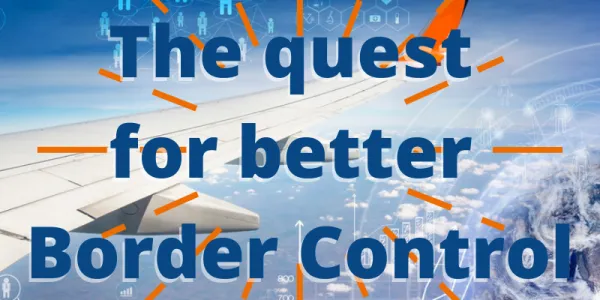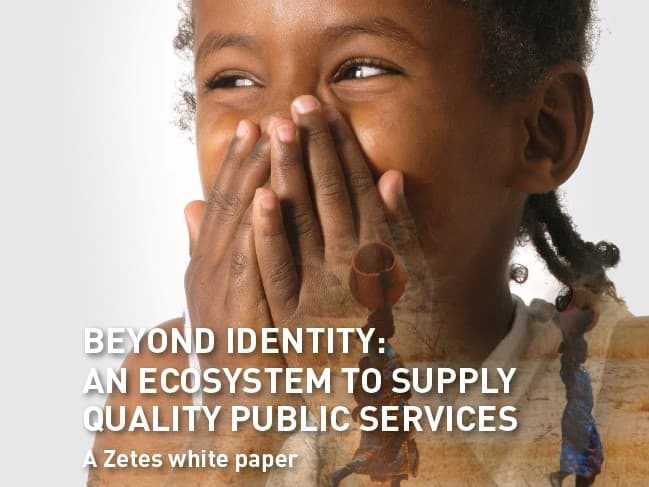This article was originally published by David Charlier for the 2019 ID4Africa almanac.
David Charlier is Bid manager at Zetes since 2015 and has been involved in the technical preparation and overall coordination of a number of major tenders for the company, including the Belgian eID, the Togolese biometric voters’ registration and the border control solution in Cabo Verde.
What challenges do authorities face around the world – and what are the realities in Africa?
Wherever you are, border control involves much more than processing a visitor’s passport efficiently through an airport. It’s about managing all air, land and sea borders – day in and day out. This entails handling not just passports, but all kinds of travel documents, both paper and electronic. It’s also about being responsible for ensuring high levels of security, and managing internal and external watch lists. Plus managing a wide range of facilities, minimising queues, and often dealing with VIPs, from ambassadors and ministers to high-profile business people.
Most importantly, the way a country chooses to deploy its border control (including, but definitely not limited to, its airports) says a lot about its capabilities generally, and its commitment to safety. If a country is perceived as being unable to control its borders properly, this has a huge impact on its reputation. Good border control is a clear sign of a country or state’s ability to manage its affairs – and maintain its sovereignty.
More than technology
So how does a country achieve the kind of border control that reflects well on its overall management abilities? Looking at today’s airports, you could be tempted to think it’s largely a case of keeping up with rapidly evolving ICAO trends, which often means investing in technology. But effective border control also involves meeting some very down-to-earth challenges – such as managing hundreds of passengers at very short notice, in a limited time and space, securing thousands of kilometres along desert borders, and many others.
For solution providers such as Zetes, the goal is to help border control agencies react successfully to a wide range of everyday (but often unexpected) situations.
Responding to challenges like these demands not only technological investment but also procedural knowledge and creativity. Of course it means installing and maintaining border control booths as well as other equipment, but it’s the daily management of the service as a whole – ensuring it works effectively in all its specific locations – that really counts. For solution providers such as Zetes, the goal is to help border control agencies react successfully to a wide range of everyday (but often unexpected) situations. Which, especially in Africa, can require a lot more than staying up to date with ICAO tools. Whether it’s API, PNR, eMRTD, BAC, EAC, SAC – or any other abbreviation you care to mention – the technology is useless without a full appreciation of the realities on the ground.
Particular situations at the border demand particular types of control
Effective border control is about understanding the needs of a location – and of the people and goods moving through it – and then choosing and adapting the best technology to suit them. In countries where long land borders make consistent control extremely difficult, solutions can be tailored to provide ‘moving’ border control, designed to provide security over huge areas. For example, mobile custom officers in vehicles can be equipped with passport scanners and automated face-recognition cameras, supported by a central database that works both online and offline. This illustrates how local knowledge and different technologies can work together to solve a specific but common problem.
It’s not about the most up-to-date technology, but about the most up-to-the-job technology.
Also, where the irregularities of an informal economy pose a problem, systems and processes can be designed accordingly. Again, it’s not about the most up-to-date technology, but about the most up-to-the-job technology.
Sending the right message
As we said earlier, the way a state or country manages its borders can speak volumes to the rest of the world. Creating a good first impression for visitors is essential – and in many places, the airport is a great opportunity to build the right image. Even smaller, less prosperous countries put a lot of money and effort into making their facilities look as smart as possible, and work as efficiently as possible. They know that long waiting times, failing equipment and unreadable passport stamps will lead to the assumption that they are not serious and, worse, not secure.
Solution providers are responsible for more than just providing technology. They should also offer suggestions for good practices and procedures to help authorities transform the experience of passing through borders from a ‘necessary evil’ into a routine process with greater perceived value for both border authorities (improved security management) and travellers (increased security). Nowadays, travellers, both business and leisure, understand the need for increased security measures around the world. However, they don’t want to be bothered by it. Government authorities should be able to work with their solution provider to tackle this reality.
A crossroads for databases
To add to the burden, border control requires great expertise in managing databases. This is a place where different types of database meet, and some are built and maintained. Ensuring their accuracy and usability is vital.
This is a place where different types of database meet, and some are built and maintained. Ensuring their accuracy and usability is vital.
National databases are needed to check nationals’ passports, other national travel documents and internal watch lists. Alongside, there is also a need for international databases to check foreigners’ passports, foreign travel documents and visas. And sometimes interaction with external databases, such as Interpol’s, is required. Managing all these databases can be complicated, especially at the national ‘air, land and sea’ scale.
Then, of course, there’s a fourth database: the one the border agency creates and owns, to record who and what crosses the borders. This is important not only for statistical purposes, but also for security, as an ABIS-made database helps fight illegal crossing.
The right information, the right way
All in all, border control is mainly supported by information that has been collected, correlated and analysed. Therefore, the technology used in state-of-the-art airports is important for the data it helps to gather and check. But knowing where, when and how to apply that technology is equally important – and many factors affect these decisions. Who, and what, is crossing the border? What kinds of documents do they hold? Investing in the latest software and hardware will not help answer these questions. This is information that comes only from local experience and from intelligence gathered over time.
Of course, using this information effectively for better border control is another task in itself – and one where the right technology really can make a difference. It’s a solution provider’s job to understand the diversity of information involved, and to adapt technology to the specific issues each country faces.
David Charlier, Bid Manager at Zetes PeopleID

